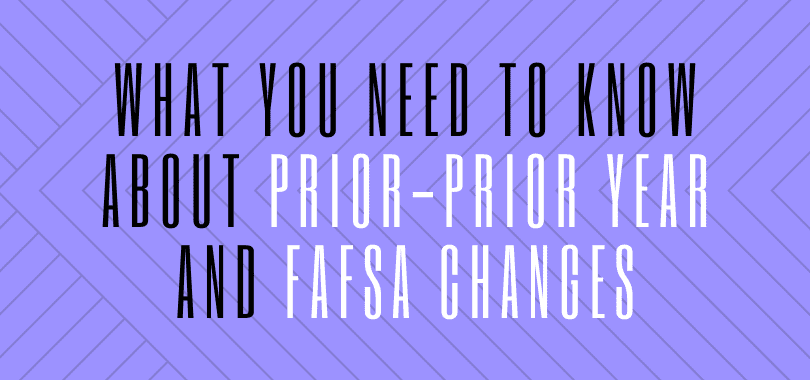Key Takeaway: When you file FAFSA, the Federal FAFSA deadline (June 30 of the award year) isn’t the only important date to consider. You also need to factor in the College’s FAFSA deadline and the State FAFSA deadlines. These dates vary by institution, state, and program, so check with your school’s and state’s websites to ensure you file your FAFSA on time to qualify for federal aid, scholarships, grants.
The Free Application for Federal Student Aid (FAFSA) helps students receive federal student loans, grants, scholarships, and more. However, if you don’t get the application in by the appropriate deadlines, you could miss out on some free money*. To complicate matters, there isn’t just one due date you need to pay attention to – there are several. In this article, we cover all of the FAFSA deadlines you should mark on your calendar.
What Are the 3 Major FAFSA Deadlines?
Students and their parents or guardians can usually access the FAFSA on October 1 each year, with some exceptions. For the 2025-2026 award year, the application will be released on December 1, due to changes with the form and how the Department of Education determines aid.
1. Federal FAFSA Deadline
The federal deadline for the FAFSA is June 30 of the award year. So, the 2025-2026 FAFSA, released in 2024, would have a due date of June 30, 2026 at 11:59 p.m. Central time. Students would be able to submit corrections up until mid-September, 2026.
The government’s FAFSA due date is only for federal funding, such as federal student loans and the Pell Grant.

2. College FAFSA Deadlines

Flickr user hisham_hm
Colleges also use the FAFSA to determine financial aid packages for their accepted students, including need-based scholarships. When you complete the application, you can ask the government to send the results to up to 20 colleges and career/trade schools at a time.
However, students need to submit their FAFSA application well before the federal deadlines if they want to receive any institutional scholarships or grants. Most schools’ deadline is late winter, early in the spring college semester, with some exceptions.
Some examples for the 2025-2026 award year:
- Harvard requires the FAFSA by February 1 2025 for both restrictive early action and regular decision applicants.
- Students attending MIT need to have theirs in by February 15.
- Colorado State University doesn’t need the student’s FAFSA until May 1.
Colleges with priority application dates may also have priority FAFSA due dates.
Most schools list their specific FAFSA deadlines on their websites. If it isn’t mentioned, call the institutions’ financial aid department.
Colleges’ financial aid can and does run out. Even if you’re not 100% positive you’ll be applying to a particular school, list them on the FAFSA anyway so they have your information just in case. You can always remove them and add other schools later.
College Scholarship Consideration Deadlines
Students who need financial aid to attend college should note priority, scholarship consideration, and early action deadlines. Some schools require students to submit early applications in order to be considered for institutional grant aid.
For instance, Florida State University accepts applications through rolling decision until March 1. However, their scholarships are competitive and funds are limited. The school recommends that students apply by the regular decision deadline, December 1, to increase their chances of receiving a scholarship.
3. State FAFSA Deadlines
Most states also have scholarship and grant programs for their students. As with colleges, these states use the FAFSA and have their own specific deadlines. The due date could be statewide or program-specific, or there may be priority deadlines.
Most state-run grants run on a first-come first-served basis. Priority deadlines refer to due dates where, if a student submits it before that day, they’ll receive priority consideration for the program. Students can still submit their FAFSA after this date, but their applications will only be considered if there’s money left to hand out.
For the 2025-2026 award year, a majority of California’s state financial aid programs require the application by March 3, 2025. The Arizona Promise Program has a priority deadline of April 1, 2025. Alaska recommends applying as soon as the FAFSA opens for the Alaska Education Grant, but their other program, the Alaska Performance Scholarship, has a priority deadline of June 30, 2025.
You can visit your states’ education department website or the FAFSA website to learn more about their financial aid deadlines and programs.
State Financial Aid Applications
Some states also have their own financial aid applications. Most will accept the FAFSA or the state application, but you should always complete the FAFSA to try for federal and institutional programs.
However, there are some exceptions. For example, the Florida Financial Aid Application (FFAA) is required for students interested in the state’s Bright Futures program. You can’t apply to the program without completing the FFAA. Check your states’ grant requirements to make sure you have the correct documentation submitted.
Why Should You Complete the FAFSA as Soon as Possible?
Although the FAFSA isn’t technically due until the end of the award year and most colleges and universities don’t require it until February or later, you should still complete the application as soon as possible.
Financial aid through schools and state-run programs can run out of money, and some can run out quickly. Applying as soon as the FAFSA comes available on October 1 (or December 1 for 2024) puts you in the running for as many opportunities as possible. Delaying could mean the difference between thousands of dollars in free money.
If you’re heading to college, even if you don’t think you’ll get anything, complete the FAFSA each year. Most schools require it to be considered for any institutional grant aid, and you could be pleasantly surprised. As you complete your college applications, take note of any related financial aid requirements, due dates, and information to increase your chances of getting free money for your education.
Scholarships aren’t only offered through colleges and universities. Thousands of organizations, businesses, and individuals offer awards for students – and many are easy to apply to! Discover scholarships you qualify for here.
*While a scholarship does not have to be repaid, there may be other obligations associated with the scholarship.
| Lender | Rates (APR) | Eligibility | |
|---|---|---|---|
 |
5.34%-15.96%* Variable
3.99%-15.61%* Fixed
|
Undergraduate and Graduate
|
VISIT CITIZENS |
 |
4.92% - 15.08% Variable
3.99% - 15.49% Fixed
|
Undergraduate and Graduate
|
VISIT SALLIE MAE |
 |
4.50% - 17.99% Variable
3.49% - 17.99% Fixed
|
Undergraduate and Graduate
|
VISIT CREDIBLE |
 |
6.00% - 13.75% Variable
3.99% - 13.75% Fixed
|
Undergraduate and Graduate
|
VISIT LENDKEY |
 |
5.50% - 14.56% Variable
3.69% - 14.41% Fixed
|
Undergraduate and Graduate
|
VISIT ASCENT |
 |
3.70% - 8.75% Fixed
|
Undergraduate and Graduate
|
VISIT ISL |
 |
4.99% - 16.85% Variable
3.47% - 16.49% Fixed
|
Undergraduate and Graduate
|
VISIT EARNEST |
 |
5.00% - 14.22% Variable
3.69% - 14.22% Fixed
|
Undergraduate and Graduate
|
VISIT ELFI |





